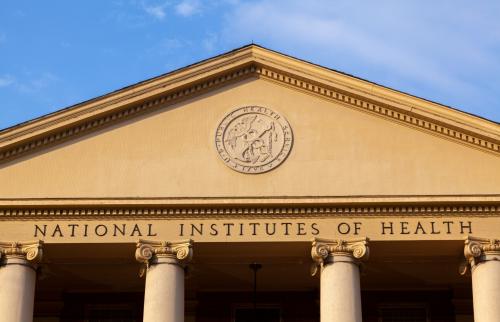Recently the Centers for Medicare and Medicaid (CMS) made troves of data publically available. CMS released data on hospital charges, physician utilization, in addition to other data sets. Journalists and academics were excited to potentially confirm their theories on healthcare spending. The Engelberg Center hosted an event, Hacking America’s Health where experts from the Brookings Institution and the government spoke to participants of the DC Challenge Festival regarding the impacts of data transparency on the nation’s healthcare system. The purpose of the festival is to focus on “innovators from around the world and their transformative solutions to global challenges.” Out of this discussion emerged a consensus that data transparency could spur disruptive innovation in the health sector but overcoming several key barriers was essential to maximizing the benefits to the public.
Benefits of Data Transparency
1. Help Consumers Make Informed Decisions
Open data offers numerous benefits to consumers. The CMS data unveils the enormous variation in the cost of different treatments. Enabling consumers to find high value care providers improves the efficiency of the market. Price transparency can also uncover providers that charge unusually high prices and puts pressure on them to lower those charges. Finally utilization can reveal if a doctor uses a rare treatment with regularity. All of these data empower health care consumers to choose wisely.
2. Identify Vulnerable Patients
CMS has used open data for numerous projects to help patients. One project involves collaboration with local and state governments. Using Medicare claims information they identified specific patients who could be in special danger in the aftermath of a natural disaster. Without electricity it’s impossible to operate a lifesaving device like a ventilator or nebulizer. The claims data allows emergency officials to notify such individuals about the locations of shelters.
3. Data Mashups
Combining together data sets could help identify bad actors in the health system. For example merging data from the Sunshine Act which describe payments and items given to physicians combined together with utilization data from CMS. This could identify doctors who were using a drug or procedure due to a financial relationship rather than best practice. Other data mashups could also uncover unexpected patterns.
4. Use Your Own Data
A recent regulatory ruling requires insurance companies to hand over your own medical records in a timely matter. Consumers could take their records with them to a specialist. In the future it may also be possible for your doctor to upload your records into an app that would provide instant diagnostics.
Barriers to Improvement
1. Lack of Available Private Data
The CMS data releases do not include utilization and charge information from private insurers. These data are the missing pieces to understanding how the system functions as a whole. More than half of all Americans receive insurance through their employer or pay for their own coverage. The CMS data provides a view into about a third of the insurance market. The restriction to only public insurance information restricts the types of possible analyses and could lead to incorrect judgments about the healthcare system as a whole. Fortunately this barrier may disappear in the future. Recently UnitedHealthcare, Aetna, and Humana announced the creation of a payment database that would be available free of charge. Until then innovators can only use the data that exists in the public domain.
2. Transparency on its Own Isn’t Enough
Simply making data available isn’t enough to transform the healthcare system. Consumers choosing doctors will often ignore publically available data and relay on anecdotes from friends or the proximity of the doctor’s office. It’s easier to shop for some medical procedures than others, for example if there is only one specialist within driving distance of a patient. But consumers could make price comparisons on knee or hip replacements with relative ease. Policy makers can’t release data and then rest on their laurels. To the best of their ability it is important to supportive an innovation ecosystem that can take full advantage of public data. Otherwise data releases will yield few benefits.
In her talk Claudia Williams of the Office on Science and Technology policy argued the position of the administration is that “data is a public good and a national asset.” A recent McKinsey report backs up this point finding that worldwide open data could generate $3 trillion a year in additional value. Transferring data into the public domain not only empowers innovators like the participants in the Challenge Festival to disrupt inefficient systems through data transparency it also powers future economic growth.
The Brookings Institution is committed to quality, independence, and impact.
We are supported by a diverse array of funders. In line with our values and policies, each Brookings publication represents the sole views of its author(s).




Commentary
How to Maximize the Value of Data Transparency in the Health Sector
May 30, 2014